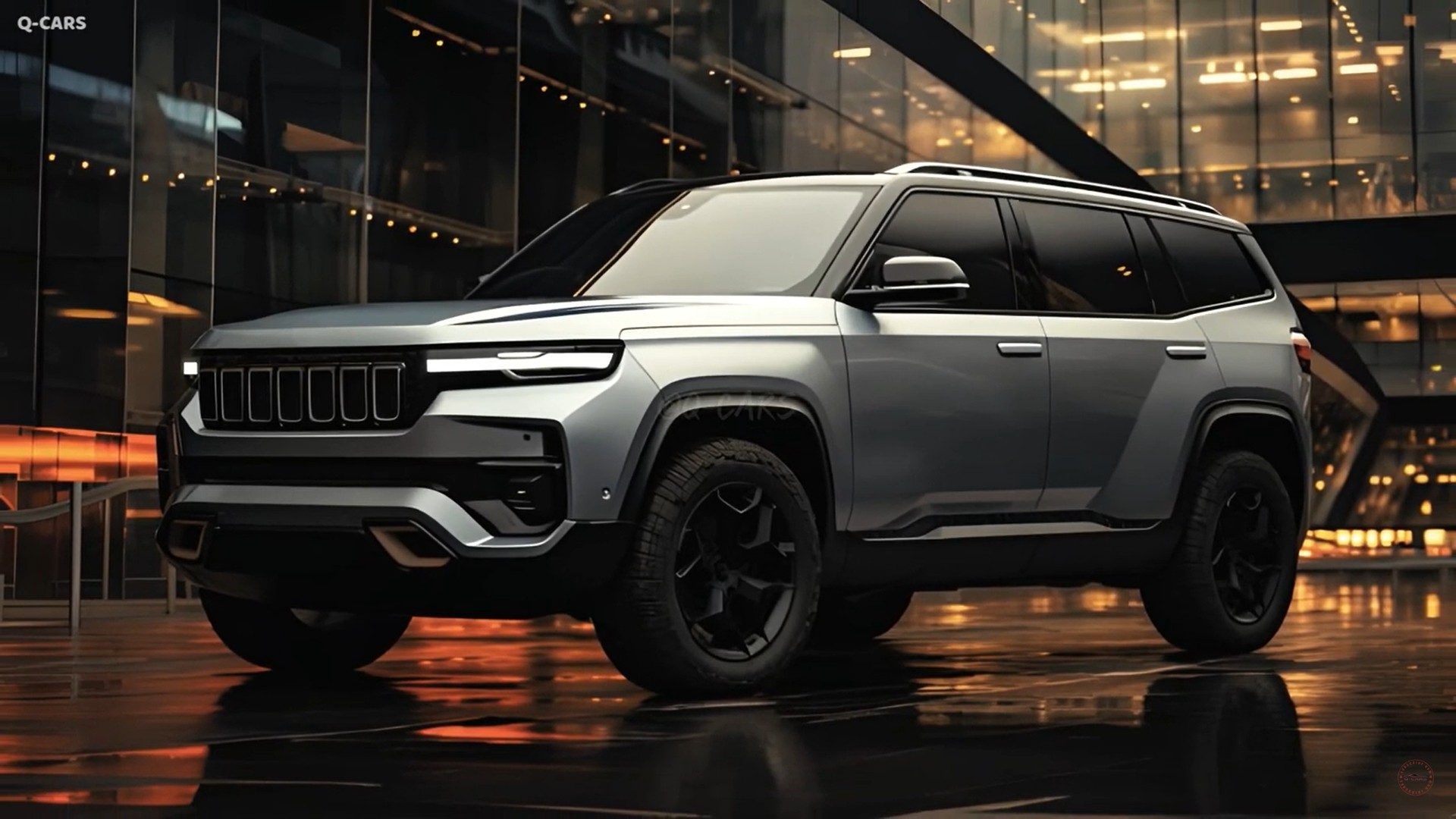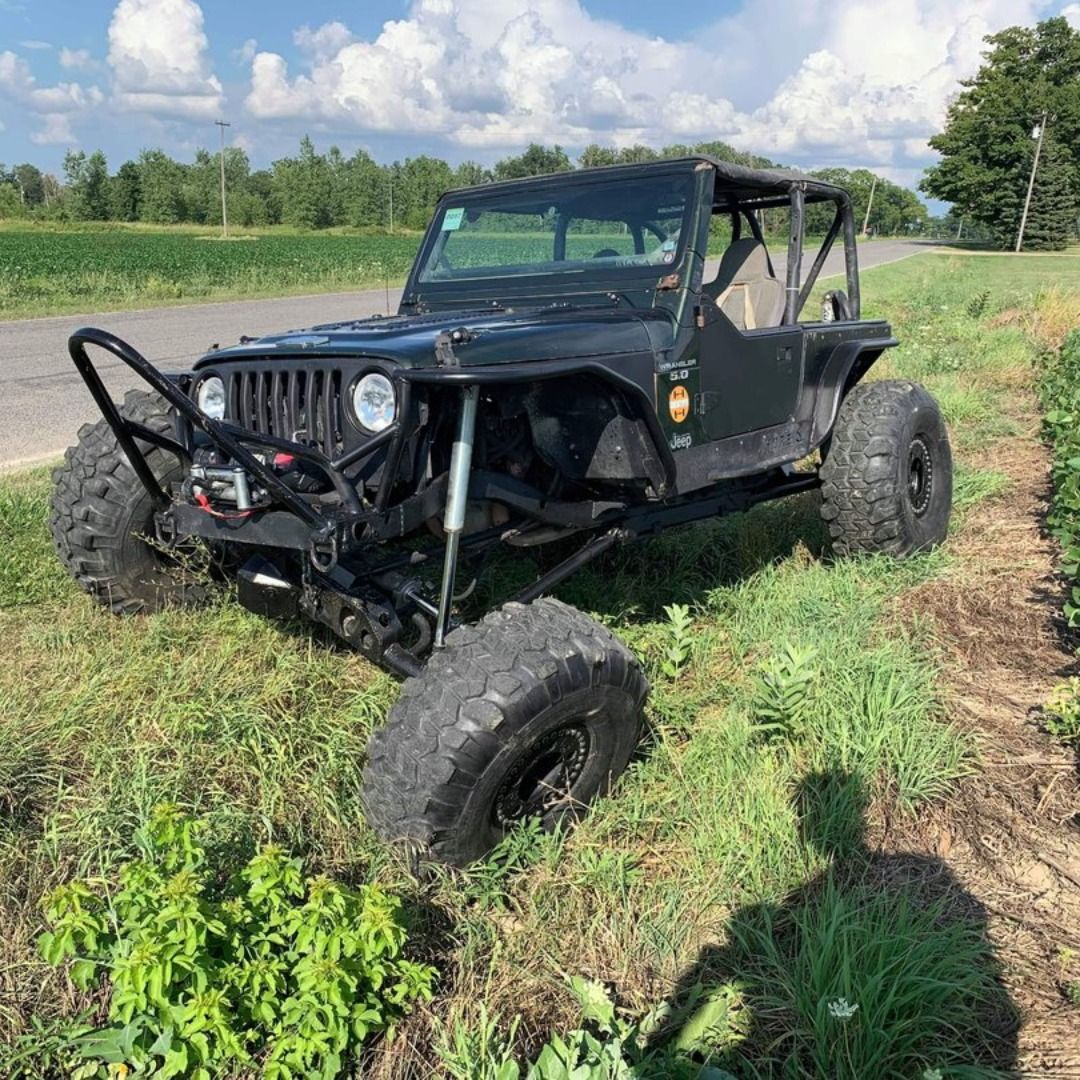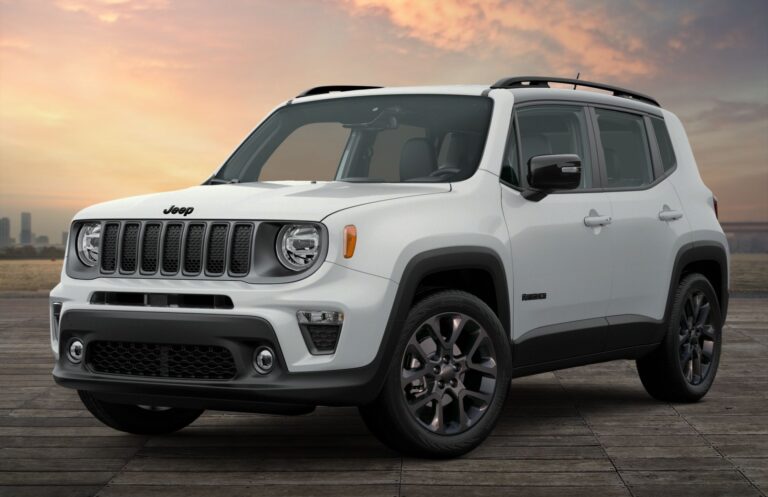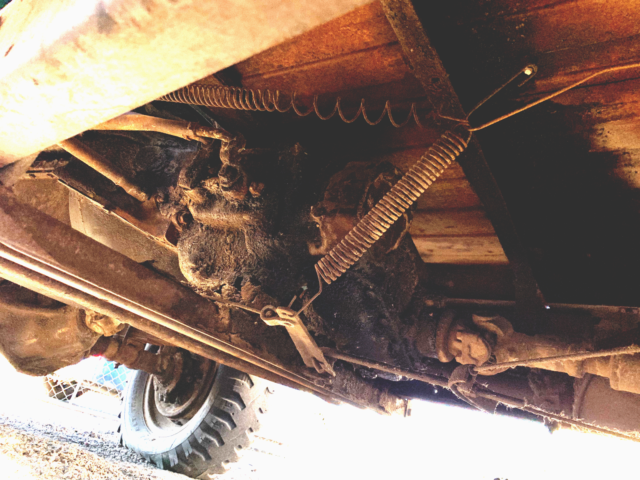Used Jeep Axles For Sale: Your Ultimate Guide to Finding the Right Foundation
Used Jeep Axles For Sale: Your Ultimate Guide to Finding the Right Foundation jeeps.truckstrend.com
The iconic Jeep, a symbol of adventure and rugged capability, often finds itself on challenging terrains. Whether it’s rock crawling, mud bogging, or simply navigating a tough trail, the axles are the unsung heroes, bearing the brunt of the forces and transferring power to the wheels. Over time, or through ambitious build projects, these crucial components can wear out, break, or simply prove inadequate for upgraded demands. This is where the world of Used Jeep Axles For Sale becomes not just a market, but a vital resource for enthusiasts, mechanics, and restorers alike.
In this comprehensive guide, we’ll delve into everything you need to know about purchasing used Jeep axles. From understanding the different types and their applications to the critical inspection process and smart buying strategies, we’ll equip you with the knowledge to make an informed decision, save money, and get your Jeep back on (or off) the road with confidence.
Used Jeep Axles For Sale: Your Ultimate Guide to Finding the Right Foundation
Why Consider Used Jeep Axles?
Opting for used axles offers a compelling array of benefits, making it a popular choice among the Jeep community:
- Cost Savings: Brand new axles, especially aftermarket heavy-duty units, can be prohibitively expensive. Used axles offer a significantly more affordable alternative, allowing you to allocate your budget to other parts of your build or repair.
- Availability: The sheer volume of Jeeps produced over decades means there’s a healthy supply of used axles in salvage yards, private sales, and online marketplaces. This wide availability often makes it easier to find the specific axle you need.
- Performance Upgrades: Many enthusiasts seek out used axles from more robust Jeep models (e.g., a Dana 44 from a Rubicon) to upgrade their stock axles (e.g., a Dana 35). This allows for increased strength, larger tire compatibility, and improved off-road capability without the "new part" price tag.
- Restoration & OEM Fidelity: For those restoring vintage Jeeps, finding period-correct used axles is often essential for maintaining originality and historical accuracy.
- Repair & Replacement: If an axle housing is bent, a differential is blown, or a shaft is twisted, replacing the entire axle assembly with a good used unit can be quicker and more cost-effective than rebuilding individual components, especially if specialized tools are required.

Understanding Jeep Axle Types: A Foundation of Knowledge
Before you start hunting, it’s crucial to understand the common types of axles found in Jeeps and their characteristics. Knowing what you need for your specific model and intended use is paramount.

- Dana 30 (Front):
- Common Applications: Found in the front of most Jeep CJs, YJs, TJs, XJs (Cherokee), and some early JKs (Wrangler).
- Characteristics: Light to medium-duty. Adequate for stock tires and moderate off-roading. Can be prone to failure with larger tires (33" and up) and aggressive driving.

- Dana 35 (Rear):
- Common Applications: Found in the rear of most CJs, YJs, TJs, and XJs.
- Characteristics: Light-duty. Often considered the weakest link in many stock Jeeps. Prone to snapping axle shafts and breaking differential components with tires larger than 31-32" or aggressive off-roading.
- Chrysler 8.25 (Rear):
- Common Applications: Found in the rear of some XJs (Cherokee) and TJs (Wrangler), particularly after 1997.
- Characteristics: Medium-duty. Stronger than the Dana 35, often a good upgrade for XJ owners. Comes in 27-spline and stronger 29-spline versions.
- Dana 44 (Front & Rear):
- Common Applications: Found in the rear of some CJs, YJs (Scrambler), TJs (Rubicon), JKs (Rubicon), and as a common upgrade for various models. Some early JKs had a D44 front.
- Characteristics: Heavy-duty. A significant strength upgrade over the Dana 30/35. Popular for larger tires (up to 37") and more serious off-roading. Known for its robustness and aftermarket support.
- Dana 60 (Front & Rear):
- Common Applications: Rarely stock in Jeeps (some older military or industrial applications), but a highly sought-after swap for extreme builds.
- Characteristics: Extreme heavy-duty. The go-to axle for massive tires (38" and up) and hardcore rock crawling. Very large, very strong, and typically expensive even when used.
- Ford 8.8 (Rear):
- Common Applications: Not native to Jeeps, but a very popular and cost-effective swap for TJ and YJ owners. Sourced from Ford Explorers.
- Characteristics: Stronger than a Dana 35/Chrysler 8.25, often comparable to a Dana 44 in strength, especially with aftermarket shafts. Comes with disc brakes, which is a significant upgrade for many older Jeeps. Relatively easy to find and adapt.
Understanding these types, their strengths, weaknesses, and common applications is your first step toward a successful used axle purchase.
Where to Find Used Jeep Axles For Sale
The hunt for the perfect used axle can lead you to several different avenues, each with its own advantages and disadvantages:
- Local Junkyards/Salvage Yards: Often the most cost-effective option. You can typically inspect the axle in person and negotiate prices. The selection can be hit-or-miss, and you might need to pull the axle yourself.
- Online Marketplaces (Craigslist, Facebook Marketplace, eBay): Wide reach and often good deals from private sellers. Be cautious of "too good to be true" prices and always try to inspect the axle in person before committing. Shipping can be a major cost for heavy items like axles.
- Specialized Jeep Forums & Facebook Groups: These communities are goldmines. Members often sell parts they’ve upgraded from, and you can get valuable advice and insights from experienced enthusiasts. Builds trust within the community.
- Dedicated Axle & Off-Road Shops: Some shops specialize in sourcing, refurbishing, and selling used axles. While potentially more expensive, they often offer warranties or guarantee the condition, providing peace of mind. They might also offer installation services.
- Parts Recyclers/Brokers: Large operations that dismantle vehicles and sell parts. They often have sophisticated inventory systems and can ship nationwide, but prices may be higher than local junkyards.
Key Considerations Before Buying a Used Jeep Axle
A successful purchase hinges on thorough preparation and careful evaluation. Here’s what you need to think about:
- Compatibility:
- Width: Ensure the axle width matches your Jeep’s requirements or your desired stance. Swapping wider axles can require fender flares or larger wheel wells.
- Bolt Pattern: Most Jeeps use a 5×4.5" (TJ, YJ, XJ) or 5×5" (JK, JL, some WK/WJ) bolt pattern. Make sure the axle’s bolt pattern matches your wheels, or be prepared to change wheels or use adapters.
- Mounting Points: Suspension mounts (spring perches, control arm mounts, shock mounts) need to be compatible. Swapping axles between different Jeep generations (e.g., JK axle into a TJ) often requires cutting off old mounts and welding on new ones.
- Gearing: Determine the gear ratio of the axle. This is critical for performance, especially if you’re running larger tires. Mismatched gear ratios between front and rear axles can destroy your transfer case. If buying an axle without a tag, you’ll need to manually check the gear ratio.
- Locker/Limited Slip Differential (LSD): Does the axle come with a factory locker (e.g., Rubicon Dana 44s) or an aftermarket locker/LSD? This can significantly increase the value and capability of the axle, but also its price. Ensure it’s in working order.
- Condition: This is the most crucial factor for used parts. We’ll detail the inspection process below, but prioritize axles that show minimal signs of abuse, rust, or damage.
- Intended Use: Are you building a daily driver, a weekend trail rig, or a hardcore rock crawler? Your intended use will dictate the strength and features you need in an axle. Don’t overspend on a Dana 60 if a Dana 44 will suffice.
- Budget: Beyond the purchase price of the axle, factor in potential costs for shipping, new brakes, new U-joints, fluid, seals, gaskets, and potentially new mounting brackets or driveshafts if it’s an upgrade.
The Inspection Process: What to Look For
Never buy a used axle sight unseen if possible. A thorough inspection can save you hundreds, if not thousands, of dollars in future repairs.
- Visual Inspection for Damage:
- Housing Bends/Dents: Look along the length of the axle tubes. Any severe bends, creases, or large dents indicate impact damage and can compromise strength or alignment.
- Rust: Surface rust is common and generally fine. Excessive, deep, or flaky rust, especially around welds or mounting points, can indicate structural compromise.
- Welds: Check all welds, particularly on spring perches, control arm mounts, and differential covers. Look for cracks, poor penetration, or signs of re-welding that might indicate previous repairs.
- Differential Inspection:
- Fluid Leaks: Check around the differential cover, pinion seal, and axle tubes for signs of oil leaks. A minor weep might be acceptable, but active drips indicate a seal replacement is needed.
- Pinion Play: Grab the driveshaft flange/yoke and try to move it up/down and side-to-side. Excessive play can indicate worn pinion bearings or damaged crush sleeve. A small amount of rotational play is normal.
- Gear Oil: If possible, remove the differential cover (or at least the fill plug). The oil should ideally be clear or slightly dark, not milky (water contamination) or metallic (worn gears/bearings). Look for large metal chunks.
- Axle Shafts and U-Joints:
- Shaft Condition: Check for any visible bends or twisting in the axle shafts.
- U-Joints (Front Axle): Inspect the U-joints on the outer ends of the front axle shafts. Check for play, rust, or missing caps. Replacements are common, but factor the cost.
- Wheel Bearings: Grab the wheel hub and try to wiggle it. Excessive play indicates worn wheel bearings.
- Brake Components:
- Calipers/Drums: Check for damage, leaks (calipers), or excessive rust.
- Rotors/Drums: Assess wear. You might need to replace them, but if they’re severely grooved or warped, it’s a sign of neglect.
- Brake Lines: Inspect the steel brake lines and rubber hoses for corrosion, cracks, or damage.
- Gearing Verification: If there’s no tag, you’ll need to manually count teeth or use a formula (e.g., count driveshaft rotations vs. tire rotations) to confirm the gear ratio. This is critical.
Installation & Beyond: What to Expect
Once you’ve secured your used axle, the next step is installation.
- Professional vs. DIY: Axle swaps can be complex, especially if you’re changing types or widths. Unless you have significant mechanical experience, specialized tools (like a welder for mounting brackets), and a lift, professional installation is recommended.
- Additional Parts: Be prepared to purchase new fluids, seals, gaskets, brake components, U-joints, and potentially new driveshafts or custom suspension brackets to complete the swap.
- Break-in Period: If you’ve changed gears or installed new bearings, follow a proper break-in procedure (typically several heat cycles and careful driving) to ensure longevity.
- Alignment: After any axle swap, especially a front axle, a professional alignment is crucial to ensure proper handling and tire wear.
Upgrading vs. Replacing: Making the Right Choice
This decision hinges on your Jeep’s current state and your future aspirations:
- Replacing with Stock: If your current axle is simply damaged beyond repair but you’re happy with your Jeep’s performance on stock tires and light trails, finding a good used stock replacement is the most straightforward and cost-effective option.
- Upgrading: If you plan on running significantly larger tires (33" and up), engaging in more aggressive off-roading, or just want peace of mind, upgrading to a stronger axle (e.g., Dana 44 or Ford 8.8) is a wise investment. While the initial cost might be higher, it prevents future breakages and expands your Jeep’s capabilities. This often involves more fabrication and additional costs for driveshafts, brakes, etc.
Common Pitfalls and How to Avoid Them
- Buying Sight Unseen: The biggest risk. Always try to inspect the axle in person or have a trusted third party do so. Ask for detailed photos and videos.
- Not Verifying Gearing: Assuming the gear ratio is what the seller states can lead to expensive mistakes (e.g., two different ratios front and rear). Always verify.
- Hidden Damage: Some damage, like a slightly bent axle tube, might not be immediately obvious but can cause issues down the line. A thorough visual inspection is key.
- Mismatched Parts: Ensure the axle comes with all necessary components (e.g., shafts, brakes, differential) or factor in the cost of missing parts.
- Ignoring Shipping Costs: For heavy items like axles, shipping can be extremely expensive, sometimes exceeding the cost of the axle itself. Always get a shipping quote upfront.
Estimated Price Guide for Used Jeep Axles
Please note: These prices are highly variable and depend on the axle’s condition, mileage, included components (gears, lockers, brakes), location, and market demand. This table provides estimated ranges for a complete, functional used axle assembly. Axles needing rebuilds or missing components will be cheaper.
| Axle Type | Common Jeep Application | Estimated Price Range (USD) | Notes |
|---|---|---|---|
| Dana 30 (Front) | TJ, YJ, XJ, Early JK | $150 – $400 | Common, plentiful. Price varies with condition, gearing. |
| Dana 35 (Rear) | TJ, YJ, XJ | $100 – $300 | Very common, often cheap due to perceived weakness. Good for stock or light use. |
| Chrysler 8.25 (Rear) | Late XJ, Some TJ | $250 – $600 | Stronger alternative to D35. 29-spline versions more desirable. |
| Dana 44 (Rear) | TJ Rubicon, JK Rubicon, CJ, YJ Scrambler | $700 – $1800 | Highly sought after. Price depends heavily on condition, gearing, and if it includes a locker. |
| Dana 44 (Front) | JK Rubicon, Some aftermarket | $800 – $2500 | Very desirable. Price higher for Rubicon e-lockers. Often sold as a set with a matching rear D44. |
| Ford 8.8 (Rear) | (Swap for TJ/YJ) | $300 – $700 | Excellent value upgrade. Price varies with gearing, limited slip, and if it includes disc brakes. |
| Dana 60 (Front/Rear) | (Extreme Builds) | $1500 – $4000+ | Very rare as stock. Mostly from heavy-duty trucks. Price depends on condition, width, and included parts. |
Disclaimer: These prices are estimates only and are subject to significant fluctuation based on market conditions, the axle’s specific condition, included components (e.g., lockers, specific gear ratios), and geographical location. Always verify with the seller.
Frequently Asked Questions (FAQ)
Q1: How do I know what gear ratio an axle has if there’s no tag?
A1: You can manually determine the ratio. With the axle out of the vehicle, spin the input pinion (where the driveshaft connects) and count how many times it rotates for one full rotation of the wheel (with the other wheel held stationary). Alternatively, remove the differential cover and count the teeth on the ring gear and the pinion gear, then divide the ring gear teeth by the pinion gear teeth.
Q2: Can I put a Dana 44 axle in my TJ that came with a Dana 35?
A2: Yes, it’s a very common and recommended upgrade. However, it’s not a direct bolt-in. You’ll need to swap out the existing control arm mounts, spring perches, and shock mounts from your Dana 35 onto the Dana 44 (or purchase new ones) and weld them in the correct locations. You might also need different driveshafts and brake lines.
Q3: What’s the difference between a 27-spline and 29-spline Chrysler 8.25?
A3: The 29-spline version is stronger, having larger diameter axle shafts. The 27-spline version was found in XJs up to 1996, while the 29-spline version was introduced in 1997 and is identifiable by having larger diameter axle tubes.
Q4: Should I buy an axle with or without the brakes attached?
A4: If the brakes are in good condition, buying an axle with them can save you time and money. However, assume you’ll likely need to replace pads, rotors/drums, and potentially calipers/wheel cylinders anyway. If the brake components are severely rusted or damaged, you might prefer an axle without them to avoid paying for junk parts.
Q5: What’s an "axle swap," and why would I do one?
A5: An axle swap is replacing your vehicle’s entire front or rear axle assembly with a different type or model, usually a stronger one. People do this to upgrade their vehicle’s strength, accommodate larger tires, improve off-road performance, or achieve a desired track width.
Q6: Is it safe to buy a used axle from a wrecked vehicle?
A6: It can be, but exercise extreme caution. Inspect the axle meticulously for any signs of impact damage, bends, cracks, or compromised welds. If the vehicle was hit hard in the axle area, it’s best to avoid that axle entirely.
Conclusion
The world of Used Jeep Axles For Sale is a vibrant and essential part of the Jeep community. It offers a gateway to cost-effective repairs, significant performance upgrades, and the satisfaction of building a more capable rig. While the process requires diligence, research, and a keen eye for detail, the rewards are immense. By understanding the different axle types, knowing where to look, and performing a thorough inspection, you can confidently navigate the market and find the perfect foundation for your next Jeep adventure. Remember, a well-chosen used axle isn’t just a component; it’s the backbone of your Jeep’s continued journey, ready to tackle whatever lies ahead. Happy hunting!
![]()




